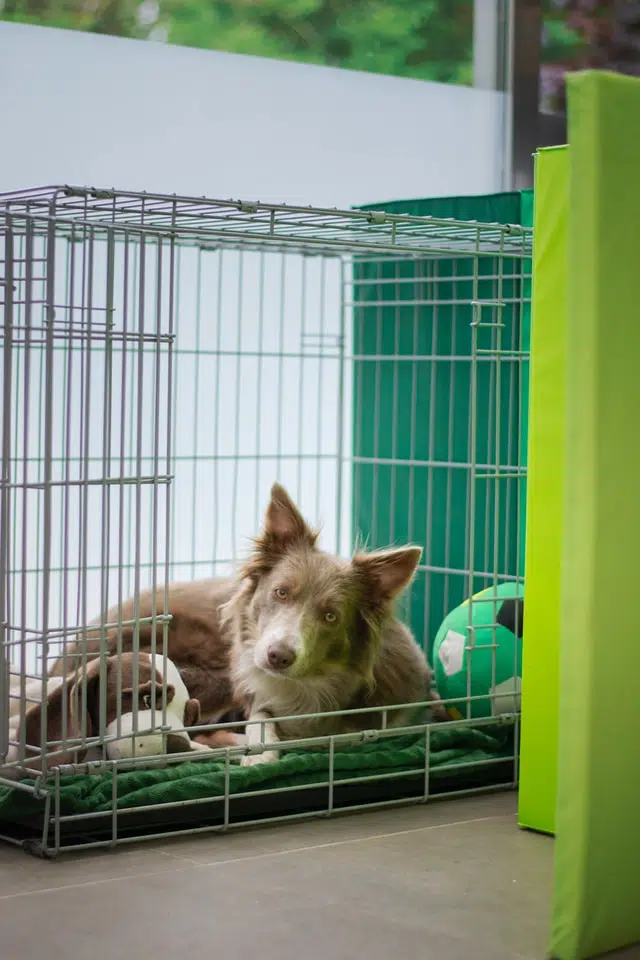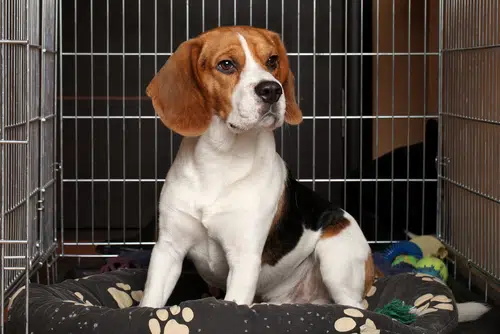Home » Blog » Pet » Pet Health & Safety » Should You Crate Train a Puppy? Part One
Categories
Tags
animal welfare
breed profile
buying a car
buying a pet
Car
car accessories
car care
car features
car insurance
Car safety
car sales
car service
cat
cat behaviour
cat body language
Cat Breeds
cat food
cat insurance
comprehensive car insurance
Dog
Dog Behaviour
dog body language
Dog Breeds
dog food
Dog Insurance
dog training
eco friendly cars
Kitten
New Car
pet accessories
pet activities
Pet Adoption
pet breeders
pet days of the year
pet fun stuff
Pet Health
pet insurance
pet parenting
Pet Safety
pet services
Puppy
rescue pets
road safety
road trip
safe driving
Recent Blog:
Facebook Posts
1 day ago
Growing old sometimes means we can’t take care of pets anymore. Find out some advice on what to do when this happens:![]()
![]() Senior Pet Parents – Contingency Plans for Your Pet – bit.ly/44bzwkS
... See MoreSee Less
Senior Pet Parents – Contingency Plans for Your Pet – bit.ly/44bzwkS
... See MoreSee Less
Senior Pet Parents' Contingency Plans for Pets
www.pd.com.au
Sometimes senior pet parents need more downtime. For older pet owners, this can be tricky to navigate if their dog or cat is full of beans and wants to3 days ago
Before you rev up the engine, let’s run through a checklist of things to do before starting your car. Not only do these steps ensure your safety (and that of others around you), but they also help in maintaining your vehicle's longevity.![]()
![]() Driving Tips: Your Checklist Before Starting Your Car -
... See MoreSee Less
Driving Tips: Your Checklist Before Starting Your Car -
... See MoreSee Less
Driving Tips: Your Checklist Before Starting Your Car
www.pd.com.au
Heading out for a drive? Hold up a second! Whether you're dashing off to work, running errands, or embarking on a road trip adventure, there are a few1 week ago
Are intestinal worms setting up camp in your dog’s gut without paying rent? Here’s how to spot the main culprits and get rid of them too:![]()
![]() Preventing, Identifying and Treating Intestinal Worms in Dogs - bit.ly/43YjCKu
... See MoreSee Less
Preventing, Identifying and Treating Intestinal Worms in Dogs - bit.ly/43YjCKu
... See MoreSee Less
Preventing, Identifying and Treating Intestinal Worms in Dogs
www.pd.com.au
Intestinal worms, such as roundworms in dogs are one of the least glamorous topics on the planet. These intestinal parasites that basically use our dogsBefore diving into whether you should crate train a puppy, know there doesn’t have to be one hard and fast rule. For some pups, it’s the best way to learn obedience while for others it simply doesn’t gel.
Crate training can give your puppy their own personal hidey hole, or it can make them feel locked up. It really depends on you, them, and your puppy training regime.
In this article, we delve into the potential benefits of crate training. Check out part two where we look at the potential drawbacks of crate training. We know every dog and their owner is unique, which is why we’ve compiled all this information so you can decide what’s right for your household.
But before we outline the possible benefits of crate training, we answer this crucial question:
What is crate training a puppy?
If you’ve got kids or know someone who has, you’re probably familiar with the concept of time-out. Time-out is a way of saying “OK, energy levels have sky-rocketed, time to stop doing what you’re doing, change environments (rooms) and chillax.” Crate training essentially provides this special place for a time-out and has other benefits too.
Puppies potentially have even more energy than kids do (this one’s totally up for debate). Having a place that signals downtime can be a lifesaver for behavioural training and for setting up territorial boundaries.
That’s not to say the entire house/garden isn’t your puppy’s domain, but that the crate is an area designated for specific activities. Such as a place for being calm versus for pooping.
A crate simplifies and speeds up the behavioural training process for puppies by creating an area for safe confinement. In no way is the crate ever supposed to be a punishment. It’s a safe space, a den, a sanctuary, and a retreat – it’s pup’s very own special territory that must only ever be associated with happy feelings. Be sure to make their ‘den’ comfy with a fitted bed or soft blanket and some favourite toys.
If a crate makes your puppy feel isolated, nervous or anxious, then it’s not working and needs to be revised or avoided.

Why crate train a puppy?
Although COVID-19 has stymied many a holiday plan, at some point you’re probably still going to want/need to travel with your pup.
There’s also the potential issue of having to replace household and wardrobe contents after an excited puppy chews them.
And there’s toilet training and teaching obedience.
Crate training can help your puppy learn positive behaviours around these issues and activities easily and fast.
Here’s how:
Pro #1: Travelling with pets
Whether it’s simply a car trip to the vet or the beach, or a weekend away (perhaps even flying with pets), crate training means your pet will always have a familiar setting. Travelling in the crate they know will help them feel calm and safe. Essentially, you’re bringing along their very own mobile bedroom.
The crate is a den that goes wherever pup goes, bringing with it familiar and comforting smells. That’s first-class travel if ever there was, and your pup is likely to agree.
Thinking of doing a road trip through New Zealand with your pet, thanks to the new travel bubble? Then read up on travelling with pets.
Pro #2: Preventing destructive behaviour in dogs
There’s also the very large and looming reality that puppies test their growing teeth on everything from shoes to furniture to you. Having a crate gives you a quick and effective way to halt this. And progressive crate training can help your puppy stop their destructive behaviour.
Of course, the crate is not ever supposed to be a punishment or a babysitter, and must only ever be associated with positive emotions, so put some treats inside and never leave pup there for long periods.
More on this further below…
Pro #3: Creating a dog den
A crate is a safe space to retreat to for your dog and is ultimately their dog den. Because puppies, no matter what breed, all share a common wolf ancestor. And just like their ancestors, dogs feel safe and happy in a den.
Dogs (and wolves) don’t pee or poop in their den, and in the same way they’re less likely to toilet in their crate. This means crate training can help your dog understand where to correctly toilet.
Pro #4: Toilet training your puppy
Toilet training puppies happens quickly once you’ve helped them identify the correct place to pee and poop. Of course, this can work in the inverse too. Once a pooch does its duties, they’re likely to follow the smell back to the same place and go there again and again, whether it’s the right or wrong place.
Because dogs will naturally toilet away from their dens, having a crate (or den) helps you control this area designation.
Always keep water inside your pup’s crate, and as soon as you let them out, take them to the place you want them to do their doggy duties. In this way, the crate becomes one of pup’s fondest clean spaces and your best potty-training ally.
Read about toilet training your puppy the right way.

When NOT to crate train a puppy
Now that we’ve explored the benefits, here’s an in-depth look at the drawbacks of crate training.
And of course, crate training isn’t for everyone; it’s a personal decision you’ll make according to you, your pup and your lifestyle.
How long can a puppy be in a crate?
Puppies should only be in the crate for brief periods between toileting – so never longer than their bladder can cope. Keep the crate in a well lived-in part of the house with the door open and let pup go in and out of it as they please, to get them started.
Here’s a video to guide you through the steps of getting your pup used to the crate. As you go through these steps your dog will naturally spend more time in the crate each day according to their age.
Here’s a daily guideline for how long each crate training session can be:
- Eight to ten-week-old puppy = 30 – 60 minutes
- Eleven to fourteen weeks = one – three hours
- Fifteen weeks and older = three – four hours
Know that this isn’t a definitive guide and different trainers have different ideas on how long puppies/dogs should spend in crates. Consider your pup’s character and your training schedule. Consult your vet to give you the best idea of how much consecutive time to have your puppy in the crate.
Dogs are social creatures who need lots of love and engagement. A crate only works when it’s paired with a healthy regime of puppy play and exercise.
Read more;
- Dog Crate Size Guide
- How to Manage a Dog on Crate Rest
- 4 Puppy Training Tips
- How to Stop a Puppy Crying
- Toilet Training Your Puppy – Tips To Help Get It Right
Dog hazards, crate training or not
Whether little or big, whether you crate train a puppy or not, our dogs get into all sorts of potentially dangerous situations. The benefit of dog insurance is that many of the most unexpected and often enormous costs of treatment may be reduced.
It means coverage for vet and medication fees, tests and hospitalisations for accidents and illnesses, third party liability cover and more. Having a dog is a big financial responsibility, but pet insurance means these bills’ barks will be bigger than their bite!
Share On:




